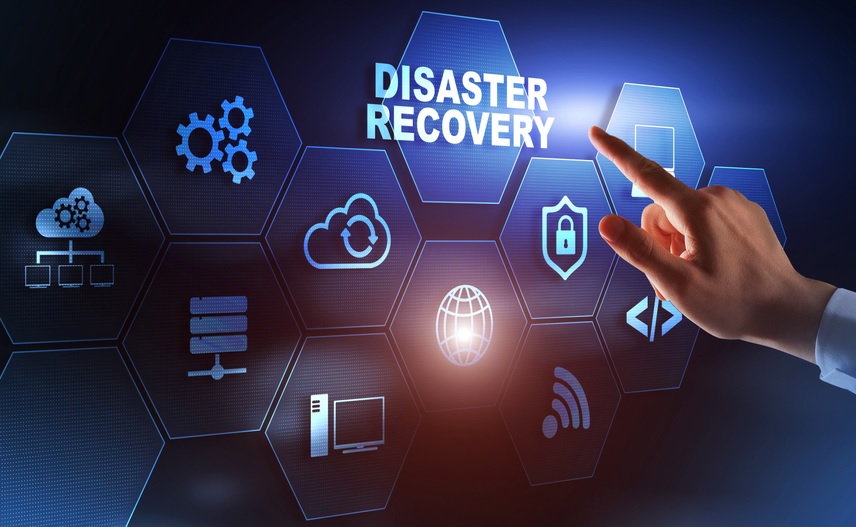
 At EXCEED ICT, we understand the criticality of having a robust disaster recovery (DR) plan in place. A well-defined DR plan enables businesses to recover swiftly from unexpected disruptions, ensuring continuity of operations and minimising potential downtime.
At EXCEED ICT, we understand the criticality of having a robust disaster recovery (DR) plan in place. A well-defined DR plan enables businesses to recover swiftly from unexpected disruptions, ensuring continuity of operations and minimising potential downtime.
In this comprehensive guide, we will explore the key elements of a disaster recovery plan and provide you with valuable insights to help you outrank your competition in Google search results.
Understanding Disaster Recovery
A disaster recovery plan is a strategic framework designed to outline the steps and procedures to be followed in the event of a catastrophic incident. These incidents can include natural disasters, cyber-attacks, equipment failures, or any other disruptive events that can impact the normal functioning of a business.
Importance of a Disaster Recovery Plan
A solid disaster recovery plan plays a pivotal role in safeguarding businesses against unforeseen disruptions. By having a well-structured plan in place, organisations can:
- Minimise Downtime: A well-executed DR plan ensures minimal downtime, allowing businesses to resume operations promptly and reduce the negative impact on productivity and revenue generation.
- Protect Data and Assets: Disaster recovery plans encompass robust data backup and recovery mechanisms, protecting critical business data, intellectual property, and valuable assets from loss or damage.
- Ensure Compliance: Adhering to regulatory requirements and industry standards is essential for businesses. An effective DR plan assists in meeting these compliance obligations and safeguards sensitive information.
- Enhance Customer Trust: Demonstrating a proactive approach to business continuity and risk management instil confidence in customers, suppliers, and stakeholders, fostering trust and loyalty.
Key Components of a Disaster Recovery Plan
 A well-structured disaster recovery plan comprises several key components, each playing a vital role in ensuring effective recovery and business continuity.
A well-structured disaster recovery plan comprises several key components, each playing a vital role in ensuring effective recovery and business continuity.
Let’s explore these components in detail:
1. Risk Assessment and Business Impact Analysis
A comprehensive risk assessment and business impact analysis form the foundation of any disaster recovery plan. By identifying potential risks and assessing their impact on critical business functions, organisations can prioritise their recovery efforts and allocate appropriate resources.
2. Data Backup and Recovery
Data is the lifeblood of any organisation, and ensuring its integrity and availability is paramount. A robust data backup and recovery strategy includes regular backups, off-site storage, and well-defined recovery procedures. This ensures that critical data can be restored swiftly in the event of a disaster.
3. IT Infrastructure Recovery
In today’s digital landscape, IT systems are at the core of most business operations. A disaster recovery plan should outline procedures for the recovery of IT infrastructure components such as servers, networks, databases, and applications. This enables organisations to restore their technology stack effectively, minimising downtime.
4. Communication and Stakeholder Management
Effective communication is crucial during times of crisis. A disaster recovery plan should define clear communication channels, both internally and externally, ensuring timely and accurate dissemination of information to stakeholders, employees, customers, and suppliers. This helps manage expectations and maintain transparency.
5. Testing and Training
Regular testing and training exercises are essential to validate the effectiveness of a disaster recovery plan. By conducting drills and simulations, organisations can identify gaps, fine-tune their processes, and enhance the overall readiness of their teams. This proactive approach significantly improves the chances of a successful recovery when a real disaster strikes.
The Path to Successful Business Continuity
 Ensuring successful business continuity requires a systematic approach and ongoing commitment. By following these best practices, you can enhance your disaster recovery capabilities and outrank your competitors in Google search results:
Ensuring successful business continuity requires a systematic approach and ongoing commitment. By following these best practices, you can enhance your disaster recovery capabilities and outrank your competitors in Google search results:
- Continuous Evaluation and Improvement: Regularly review and update your disaster recovery plan to align with changing business requirements, technological advancements, and emerging threats. This ensures that your plan remains relevant and effective over time.
- Collaboration and Cross-Functional Alignment: Engage stakeholders from across the organisation to ensure that the disaster recovery plan addresses the needs and concerns of all departments. Collaborative efforts promote a holistic approach to business continuity.
- Documentation and Documentation: Document all aspects of your disaster recovery plan, including procedures, contact information, and recovery workflows. This documentation acts as a valuable reference during times of crisis and helps maintain consistency across recovery efforts.
Conclusion
A robust disaster recovery plan is the foundation of successful business continuity. By prioritising the key components outlined in this guide, your organisation can ensure swift recovery, minimal downtime, and protect critical assets.
Remember, disaster recovery planning is an ongoing process that requires regular evaluation, testing, and collaboration. With an effective plan in place, your business will be well-equipped to navigate any disruptive event and maintain a competitive edge.
You may also like to know more about
- Business Continuity Planning vs Disaster Recovery Planning.
- Step by Step Guide for a business continuity plan.
- What is Business Continuity Planning? Importance, Risk Assessment, & Core Objectives.
- Understanding the Disaster Recovery Planning – steps, benefits and best practices.
- Disaster Recovery Planning To Ensure The Connectivity in Crisis.
Stay connected with EXCEED ICT
Stay connected with EXCEED ICT by joining our social networks (given at footer). Get the latest updates, news, and tips for enterprise device deployment. Follow us on Twitter, Facebook, and LinkedIn for the best enterprise device deployment solutions.
Help us to improve our enterprise by rating us on Google Maps. Your feedback and comments are valuable to us and will be used to make our services even better.


